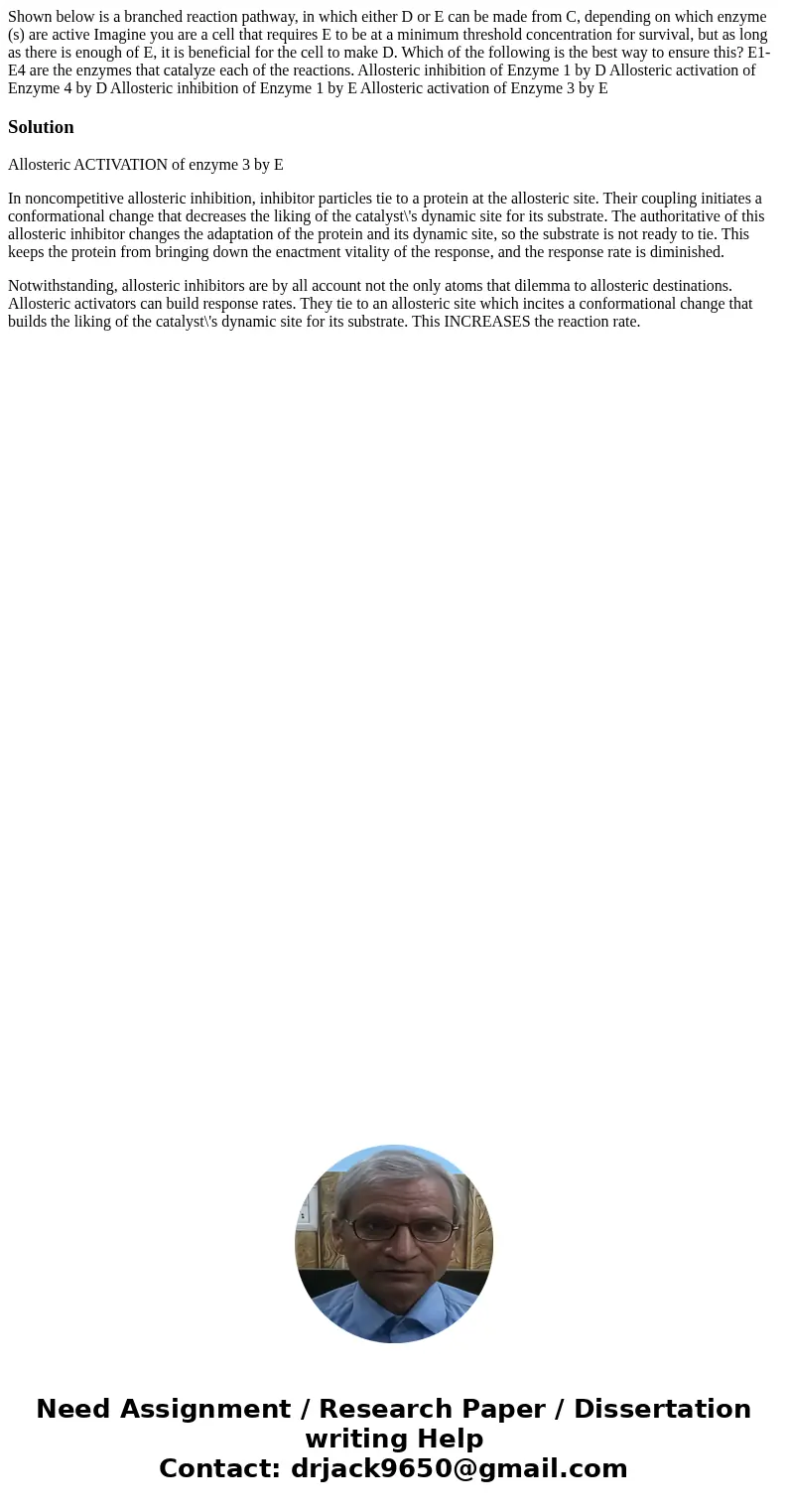Shown below is a branched reaction pathway in which either D
Solution
Allosteric ACTIVATION of enzyme 3 by E
In noncompetitive allosteric inhibition, inhibitor particles tie to a protein at the allosteric site. Their coupling initiates a conformational change that decreases the liking of the catalyst\'s dynamic site for its substrate. The authoritative of this allosteric inhibitor changes the adaptation of the protein and its dynamic site, so the substrate is not ready to tie. This keeps the protein from bringing down the enactment vitality of the response, and the response rate is diminished.
Notwithstanding, allosteric inhibitors are by all account not the only atoms that dilemma to allosteric destinations. Allosteric activators can build response rates. They tie to an allosteric site which incites a conformational change that builds the liking of the catalyst\'s dynamic site for its substrate. This INCREASES the reaction rate.

 Homework Sourse
Homework Sourse